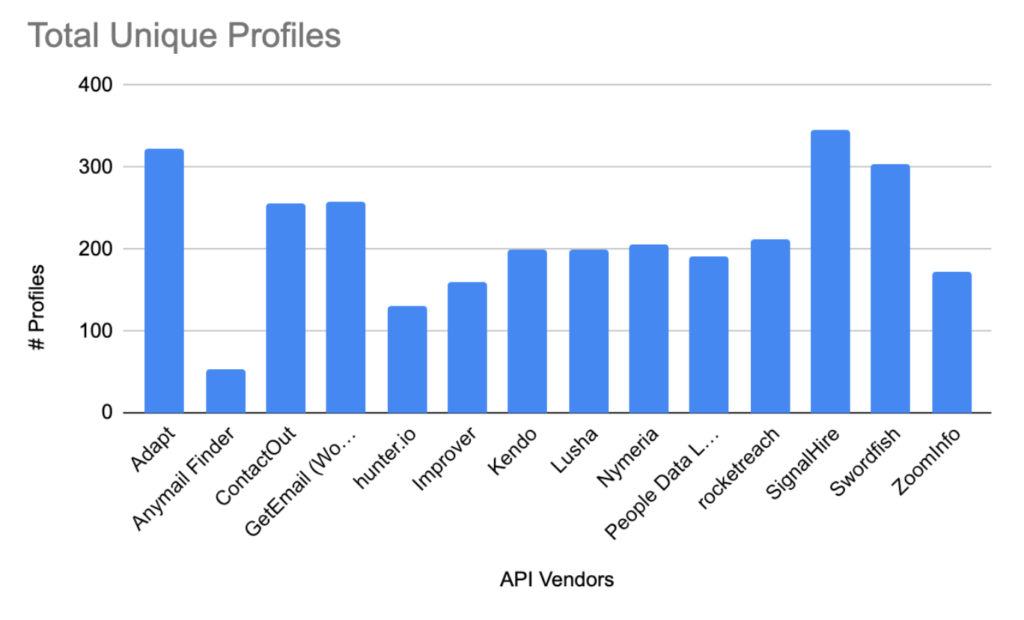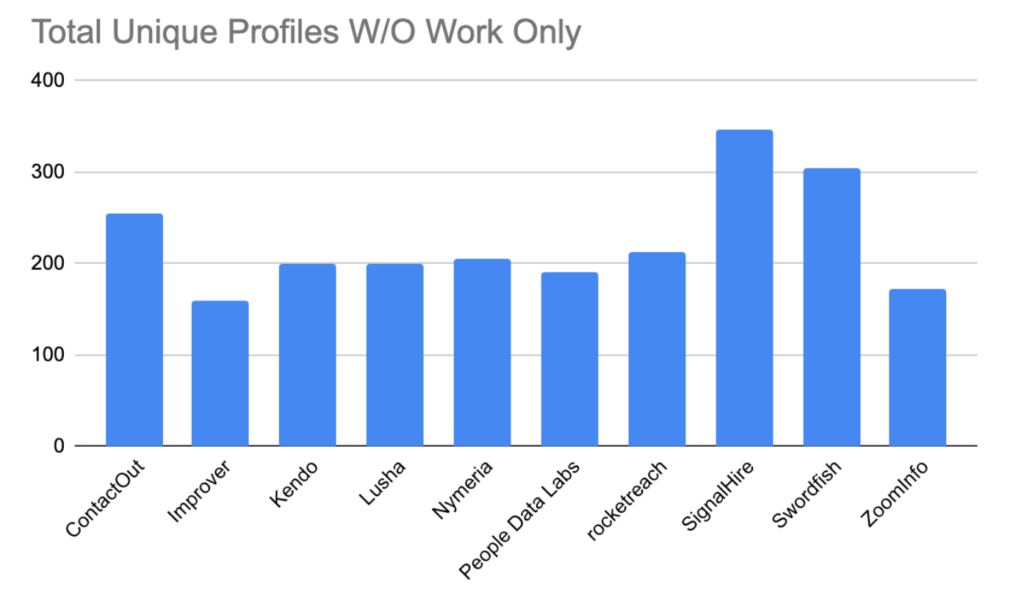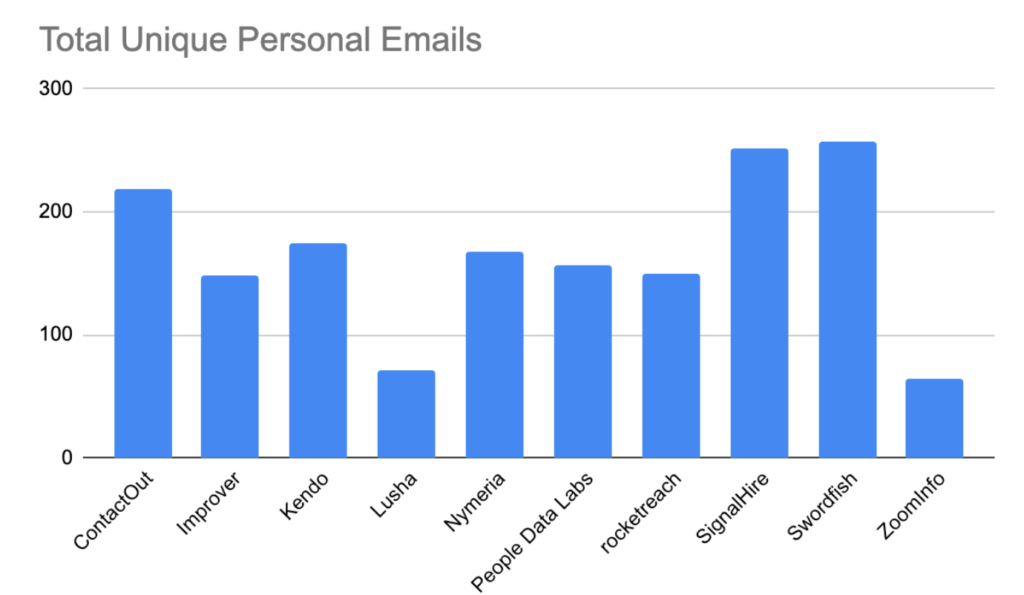If I was to put a rough estimate on it, and I only have a rough estimate, I would say that twice a week I see someone post a question about emails – recommend the best email chrome extensions, how can I find candidates’ emails, what tools can dedupe a list of emails, what tools can verify a list of emails and so on. Clearly, this problem is far from being solved for the vast majority of recruiters.
Emails are still the number one way to contact prospective candidates. Sure, you can reach out to them on LinkedIn (anecdotally, response rates on LinkedIn aren’t great) or you can text/call them (which is seen as invasive or even rude by most candidates) but all things considered, the best way to connect is still via email. Ideally, you’ll use a drip campaign with really insightful content to engage the candidate too but more on that in a separate article. First, how do you find the candidate’s email?
Scientia Potentia Est – Knowledge is Power. If you have the candidate’s email, then you can reach her. If you can reach her, then you can inform her about the opportunity, answer her questions, and coach her to success. Without it, you are stuck in the mud. So, along come all the technology providers who claim to be able to take a candidate’s name and some other identifying information and, through the magic of web crawling, find their contact details and most importantly, their email.
The marketing professionals at these organizations like to claim the ability to quickly and easily find a candidate’s contact information. However, when you speak to their product people and dig around a little bit, the hit rate of successfully finding the contact’s correct information. I thought it would be interesting to see exactly how well a set of email sourcing vendors do in a controlled environment, and the data science team at Visage was only too happy to oblige!
So we set up the experiment, taking a random sample of 1000 candidates who were submitted in the Visage platform in 2020, we tested 14 contact APIs capabilities to find those profile’s emails and additional data.
The API Vendors that we compared were:
- Adapt
- ContactOut
- GetEmail
- Improver
- Kendo
- Lusha
- Nymeria
- SignalHire
- Swordfish
- ZoomInfo
- anymailFinder
- hunterIO
- peopleDataLabs
- Rocketreach
After cleansing the data and implementing some measures to make sure the playing field was level, the total number of profiles to be tested dropped to 424. So, with a sample size of 424, let’s take a look at how well everyone did! It is worth bearing in mind that this is an independent study, we randomized the profiles and tried our best to keep everything fair but it may be sheer luck that some vendors outperformed the pack. For this analysis to be flawless, we would need to increase the sample size to 10’s of thousands and run it systematically throughout the year.
Ok, so on first sweep we looked at emails – work email and personal email. Considering that the use case for these emails is to contact the individual about a job offer, we value a personal email much more than that of a work email. With that being said, four of the providers only source work email addresses – Adapt, Anymail Finder, GetEmail and hunter.io. Those providers are really built for the sales use case rather than the recruiting one.
Out of the 424 profiles, we had an average success rate of finding either a work or personal email for just over half (50.66%) of the profiles. The best performing provider was SignalHire with 346 profiles (81.6%) and coming in last was Anymail Finder with 53 profiles (12.5%). The sheer difference between those two providers gives us a clear indication that this exercise is worthwhile, that’s a 69.1% spread. But given that Anymail Finder doesn’t have personal emails, I thought it would be more interesting worthwhile to compare SignalHire with Improver, the worst performing API that sources both work and personal emails. Improver provided a healthier looking 159 unique profiles (37.5%).

The graph shows the total number of unique profiles sourced by each vendor. The data is a little skewed by those vendors that only source work emails. We get a clearer picture when we remove those vendors.
 If you want to choose the vendor with the highest return rate, then SignalHire is the way to go. However that is Total Unique Profiles, meaning both work and personal emails. When we review personal emails only SignalHire slips into second place with 251 unique personal profiles, just behind Swordfish which has 257 unique personal profiles.
If you want to choose the vendor with the highest return rate, then SignalHire is the way to go. However that is Total Unique Profiles, meaning both work and personal emails. When we review personal emails only SignalHire slips into second place with 251 unique personal profiles, just behind Swordfish which has 257 unique personal profiles.
The average total unique profiles was 52.92%, that decreases to 39% when we focus on personal emails. 39% average provides us with context to analyze individual providers, roughly speaking for every ten candidates your recruiters find, they will only be able to get four candidates personal emails. Not great and in a numbers game, anything that can be done to push that up would be extremely helpful.

From the data, it becomes clear that there are some vendors that are more heavily leveraged towards work emails than others, noticeably ZoomInfo and Lusha. We have the two S’s, SignalHire and Swordfish, along with ContactOut in the lead. Examining this data through a recruiters lens and understanding how recruiters use these emails, it would be interesting to look at how many personal emails are being returned per profile since you don’t want to spend time emailing either dead addresses or bother a contact on multiple personal email addresses at one time. Not overly surprising, SignalHire and Swordfish are returning way more emails per unique profile they found – 129% and 160% respectively. Meaning that with Swordfish you are going to get three personal emails for every two candidates. It’s a matter of policy and practice whether you think that’s a positive or a negative and you should design your processes accordingly.
These API vendors all pull their data from multiple sources, sometimes those sources overlap and the emails are identical, whereas other times one provider will have an email while the others don’t. We recommend figuring out a price per profile that makes sense for your organization and building a toolkit of these APIs to give yourself the best coverage possible at the given price. It should be possible to bump the personal email rate from ~40% up to the mid 60’s while keeping costs below $0.20/profile.
There is an argument to be made to review your email sourcing vendors on a regular basis and really dig into where you get value from these vendors – do you want work emails, personal emails or both, do you want multiple emails per profile or just one. Talk to your recruiters, find out if there are solutions that they instinctively use more often than others and then see if that instinct is born to bear in the data. My gut says, it will be.
Improving from the average of four in ten to seven in ten may mean an increase in cost per profile of a couple of cent, and that does add up, but it may also mean increased recruiter productivity, improved placement rates and for staffing firms, increased revenue! And at the end of the day, that’s what it’s all about!

